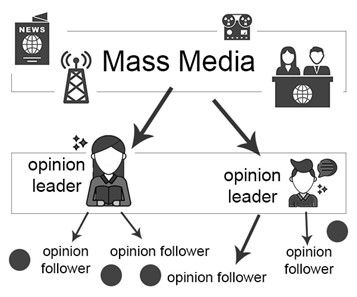
University of Florida, CJC Online, Mass Communication Theory, MMC6400.
Where do you get your daily news fix?
At 6:30 am, the New York Times Morning Newsletter appears in my email inbox. Later, as I wait for my coffee pot to finish gurgling, I catch a glimpse of Yahoo headlines as I scroll through Facebook posts.
Sipping a dark and bitter French Roast – black, no sugar – I call my sister in Baltimore for an early morning check-in. If I have extra time before my first student, I’ll click on a BBC News app to see what devastating event took place overnight.
At 7 am on Friday mornings, I chat on the phone with my 83-year-old aunt. Aunt Billye shares insights about weather predictions, President Biden’s press releases (she used to meet up with “Joe” for beers at their local VFW in the 1980s), and international cruise line gossip. My aunt is an avid cruiser. Having achieved Diamond Plus status on Royal Caribbean, I count on her for the latest scoop.

Later in the afternoon, between screeching flutes and squeaky clarinet reeds, my adult music students share local news updates from their Westchester mansions. My weekly Zoom lessons also offer a window into local news from California, Texas, North Carolina, Virginia, DC, and Long Island.
Within social media, my footprint remains small.
Facebook is my one unavoidable social platform – freelance networking requires an online presence. My likes and reposts are few. Personal posts are infrequent but usually result from an important work development or a highly entertaining photo.

At night, I tune into Jimmy Fallon or Trevor Noah. Stephen Colbert and John Oliver are favorites, but only if I want to listen to politics. Sometimes I don’t feel strong enough.
My news routine looks very different than it did 25 years ago when my morning started with a dash to West 44th and Broadway to grab a free copy of The Village Voice. When I was young and struggling in NYC, the news rarely inserted itself into my life. The only television channels were the basic 2, 5, 11, 13, and the local Manhattan access channel - remember the Robin Byrd Show? Wild times!
The world has evolved rapidly, quickly outpacing traditional methods of communication.
Today’s news menu might include:

· Friends
· Peers
· Family
· Coworkers
· Newspapers
· Television
· Online sources
· Social media
In earlier history, communication mediums were less direct or diverse. For example, how would an 18th-century seafarer like Captain Jack Sparrow acquire news?

· Message in a bottle
· Carrier pigeon
· Smoke signals
· Tattoos
· Gossip
· Manuscripts
Back in Captain Jack’s day, the news took a lot longer to circulate. Few could read or write, so most relied on interpreters or influencers to relay current events. This communication style is called Two-Step Flow Theory.

Originally coined by Paul Lazarsfeld, Two-Step Flow was first presented in a book about a 1940s voting study, The People’s Choice, and seeks to answer the questions:
Whose opinions most influence your beliefs?
Do you think the news sources you follow reinforce what you already believe or challenge you with a broader view?
Today, media messages filter through influencers to promote products, moods, attitudes, and political issues.
Weather – How to dress?
Food packaging – What is safe to eat?
Consumer advertising – Which shampoo or cleaning product is best?
Personal appearance – How to style your hair, makeup, or fashion choices?
Pop culture - Which music, movies, or television to tune in to?
Elections - Who should I vote for?
For a while, the Two-Step Model was made obsolete by greater media access for the general public. But recently there has been a resurgence of the Two-Step Model due to social media influencers.

What news have you heard lately that was particularly memorable?
Who told you?
Why was it impactful?
In the TEDxTalk How you can help transform the internet into a place of trust, Clair Wardle advocates: "We don't have a rational relationship to information, we have an emotional one. It's just not true that more facts will make everything okay. The algorithms reward our emotional responses" (2019).
Claire Wardle, TEDxTalk, Nov.15, 2019
As social media users, it falls to each of us to scrutinize our own media intake. When we share unverified content, we're adding to the global problem. Instead, each of us must apply due diligence to our social media and news media usage.
The vast majority of “media news” I ingest comes from political pundits, late-night talk show hosts, and Facebook friends through this Two-Step process. While I always take the time to vet information before sharing, in light of these revelations I may also take the time to research both left and right-leaning news reports to corroborate their stories!
Questions
Where do YOU get your personal news fix?
Whose opinions most influence your beliefs?
Who do you trust?
Share your thoughts.
Comments